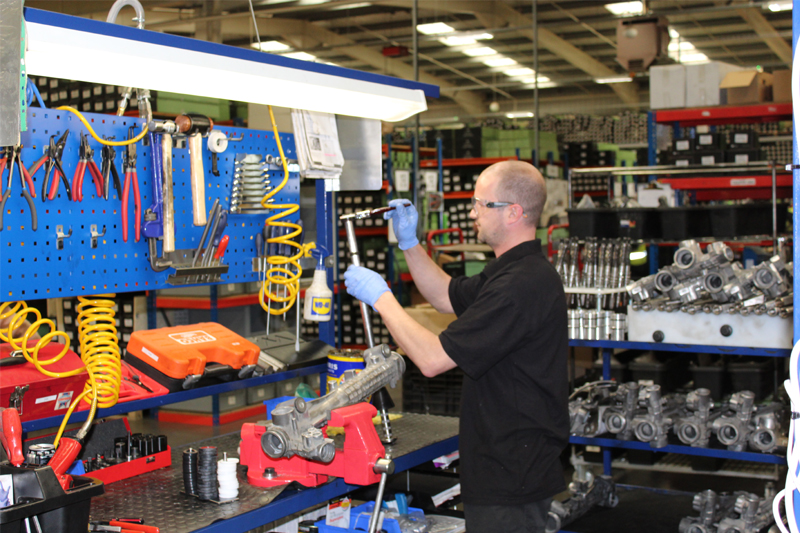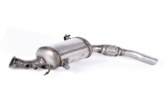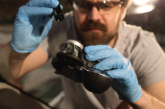
Shaftec, supplier of steering, braking and transmission parts, has revealed to PMF that key to its success in manufacturing parts for the vehicles of the future is its continuous monitoring of industry trends; specifically those relating to the environment and fuel economy. This is especially prevalent to electric power steering as the technology wrestles market popularity from the hydraulic systems of the past.
From 2014, Shaftec has seen a 59% increase in the sale of its electric steering rack and column parts; which has resulted in a 44% increase in its steering production workforce. The company has adapted its business models accordingly and invested in the latest generation of machinery and testing equipment – such as its diagnostic apparatus, which completes a ‘real life simulation’.
This increase in Shaftec’s production is in line with global demand. The global automotive power steering systems market registered revenue of $17.16 billion in 2015 and is expected to touch $41.24 billion by 2020, with an estimated CAGR of 15.73% over the forecasted period. The market for electric power steering (EPS) constituted over 50% of the overall power steering market share. This is expected to reach over 70% by 2025 due to shift from the former technology to EPS systems, owing to global fuel crisis and an immediate need for fuel efficient solutions.
In the past 20 years, the market for EPS systems has gradually surpassed conventional hydraulic steering. Increasingly, we’re seeing the replacement of traditional hydraulic pumps with electric motors and a change in the design of steering pumps – from traditional hydraulic designs to electro-hydraulic power steering (EHPS) pumps. The design of the electrical component over the hydraulic offers various advantages: less weight, less maintenance, better response at different speeds, higher durability and lesser fuel consumption.
Since the vehicle manufacturers have moved in this direction, it stands to reason that the aftermarket has and will continue to follow in its footsteps. Unstable fuel prices, more common place safety features, such as electronic stability control and ABS integrated with electronic steering systems, are also fuelling market demand.
But it’s not enough to simply be aware of the ever-shifting trends in automotive technology, as Chris Journet, Shaftec’s UK Sales & Marketing Manager, said: “To prosper in an increasingly competitive market, you have to actually put your money were your mouth is and replicate these changes within your own business model.
“That means constant research, ongoing market evaluation and investment to ensure you retain as much control of material, testing and manufacturing processes as possible in order to stay ahead of the game.
“In addition to this – knowledge is power when it comes to steering systems. The better you know your product, how it operates, its features and benefits, together with how to maintain it – the better equipped you will be to assist your customers. In turn, they can better assist their customers with advice on components – in terms of value for money, safety, quality and performance.”

Know your steering stuff
The steering system consists of several items: a rack and pinion connected to the front wheels, a piston inside the rack and pinion, which is moved by pressurised fluid from the power steering pump that helps to turn the wheels, and a cylinder containing fluid mounted on the pump or remotely mounted for easier access. If there isn’t enough fluid, steering becomes more difficult and parts can become damaged. Low fluid levels can also be the first sign of a bigger problem as it may indicate a leak, and for everything to work as it should, the fluid level should never drop. It’s therefore vital for technicians to check power steering fluid levels and top up when necessary. Remember that pumps and racks will live longer if the system is flushed regularly.
Chris continued: “We invest back into the business in terms of infrastructure, man power and machinery. The latest addition is a state of the art piece of diagnostic equipment that completes a ‘real life simulation’. This tests steering racks as if they were fitted to a car being driven. By allowing us to check the torque sensors and steering angles, clear fault codes stored in the ECU assess the assistance the rack is giving at a given speed (as they are speed variable), providing a much clearer picture of the component’s ability to react to real life situations.
“Furthermore, as many electric racks are individually imbedded with the vehicle chassis number and unique identity, this equipment enables us to ‘virginise’ the unit. This allows a remanufactured component to be connected to a new vehicle and obtain its new details from the main vehicle ECU.
“This means the unit can be fitted with a ‘plug and go’ ethos, as long as the fault has been cleared from the main vehicle ECU prior to being fitted. The benefits of this include a bigger range of part numbers available, speedier diagnosis of faults and massively increased in-house control.”







